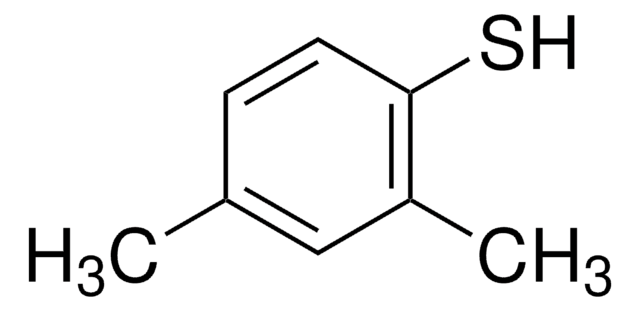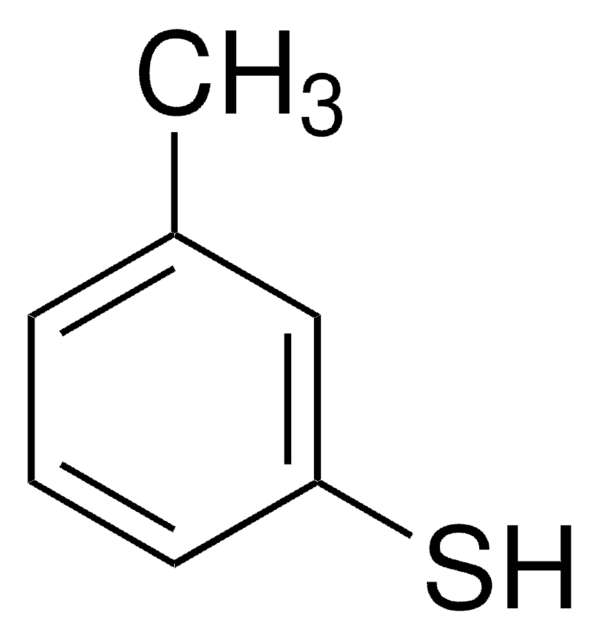252581
2-Phenylethanthiol
98%
Synonym(e):
2-Phenyl-ethylmercaptan, Phenethylmercaptan
About This Item
Empfohlene Produkte
Assay
98%
Brechungsindex
n20/D 1.560 (lit.)
bp
217-218 °C (lit.)
Dichte
1.032 g/mL at 25 °C (lit.)
SMILES String
SCCc1ccccc1
InChI
1S/C8H10S/c9-7-6-8-4-2-1-3-5-8/h1-5,9H,6-7H2
InChIKey
ZMRFRBHYXOQLDK-UHFFFAOYSA-N
Suchen Sie nach ähnlichen Produkten? Aufrufen Leitfaden zum Produktvergleich
Verwandte Kategorien
Allgemeine Beschreibung
Anwendung
- in preparation of biicosahedral Au (25) clusters protected with various types of thiol ligands
- as derivatization reagent for phosphorylated sequences of peptides, for enhancing ionization efficiency in matrix-assisted laser desorption/ionization mass spectrometry
Lagerklassenschlüssel
10 - Combustible liquids
WGK
WGK 3
Flammpunkt (°F)
194.0 °F - closed cup
Flammpunkt (°C)
90 °C - closed cup
Persönliche Schutzausrüstung
Eyeshields, Gloves, multi-purpose combination respirator cartridge (US)
Analysenzertifikate (COA)
Suchen Sie nach Analysenzertifikate (COA), indem Sie die Lot-/Chargennummer des Produkts eingeben. Lot- und Chargennummern sind auf dem Produktetikett hinter den Wörtern ‘Lot’ oder ‘Batch’ (Lot oder Charge) zu finden.
Besitzen Sie dieses Produkt bereits?
In der Dokumentenbibliothek finden Sie die Dokumentation zu den Produkten, die Sie kürzlich erworben haben.
Kunden haben sich ebenfalls angesehen
Artikel
Self-assembled monolayers (SAMs) have diverse applications; article compares benefits of alkylthiolates on gold SAM systems.
Unser Team von Wissenschaftlern verfügt über Erfahrung in allen Forschungsbereichen einschließlich Life Science, Materialwissenschaften, chemischer Synthese, Chromatographie, Analytik und vielen mehr..
Setzen Sie sich mit dem technischen Dienst in Verbindung.













